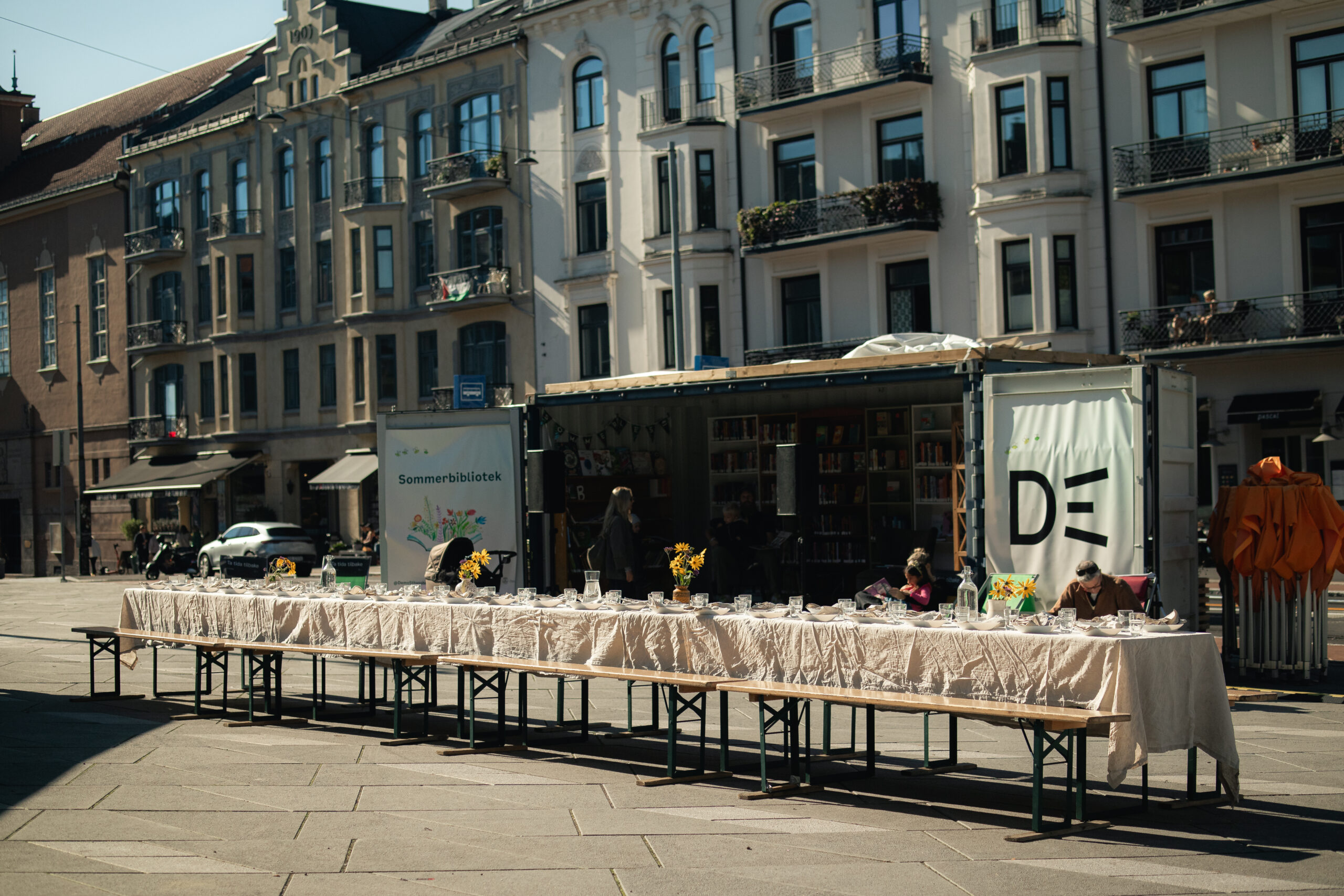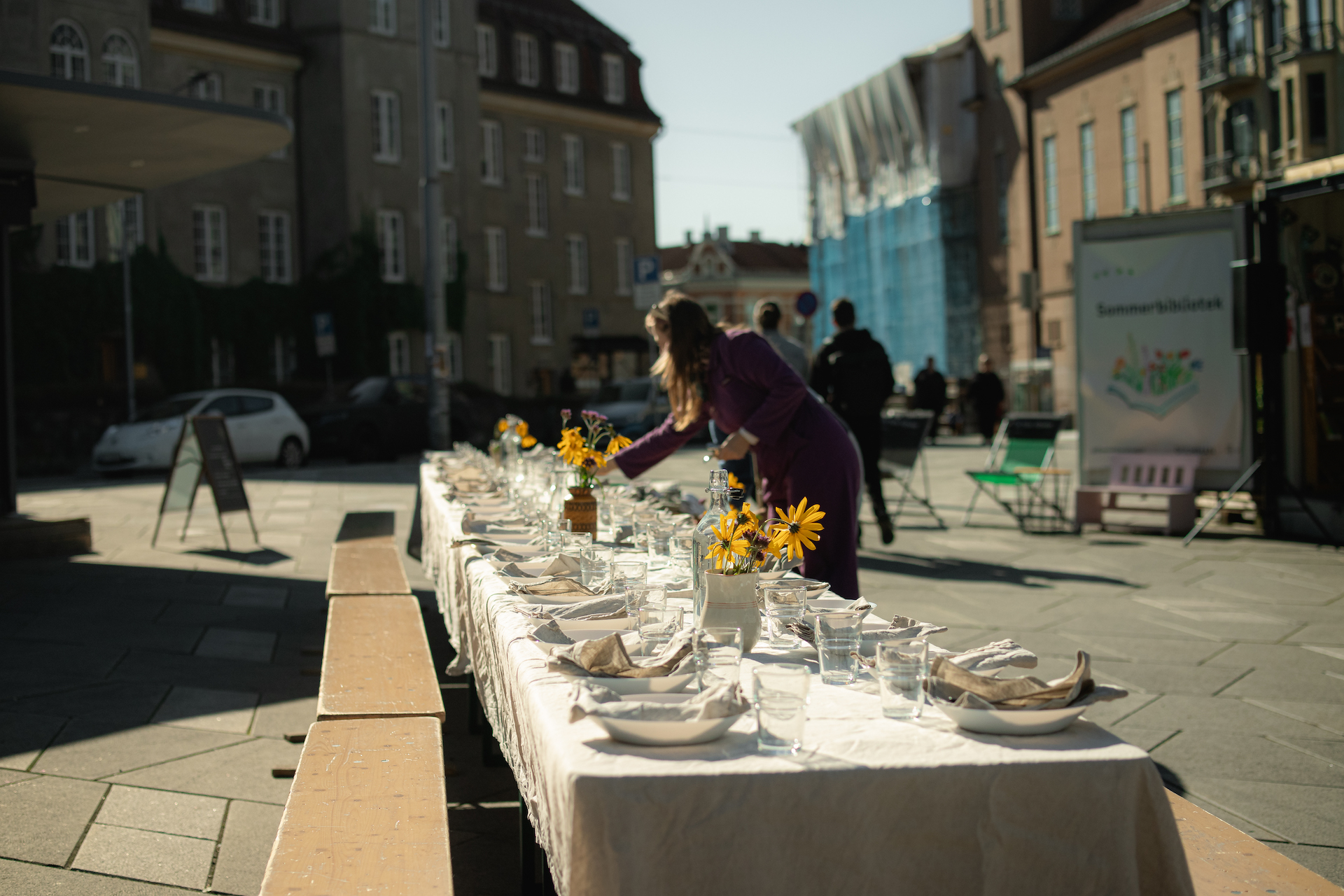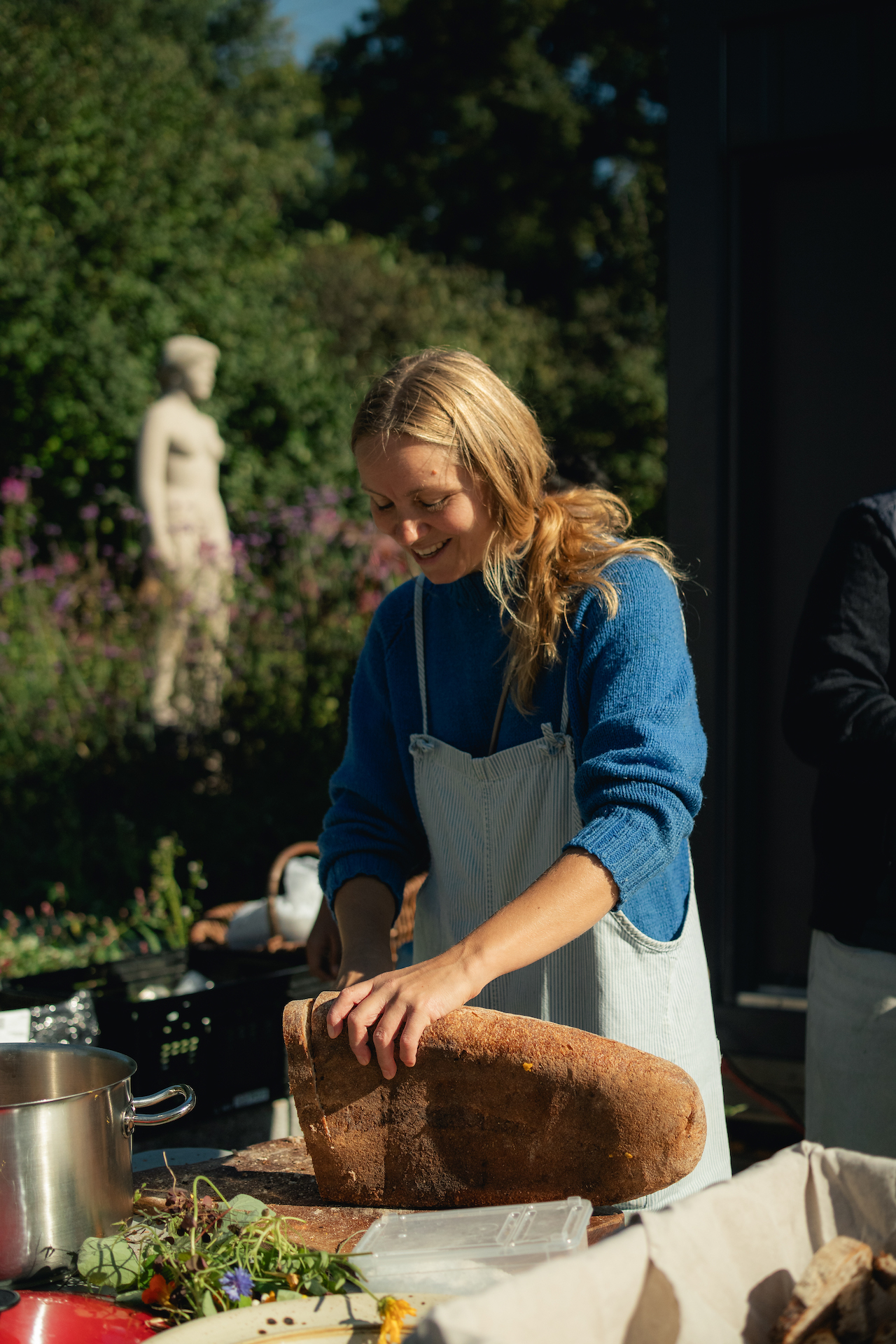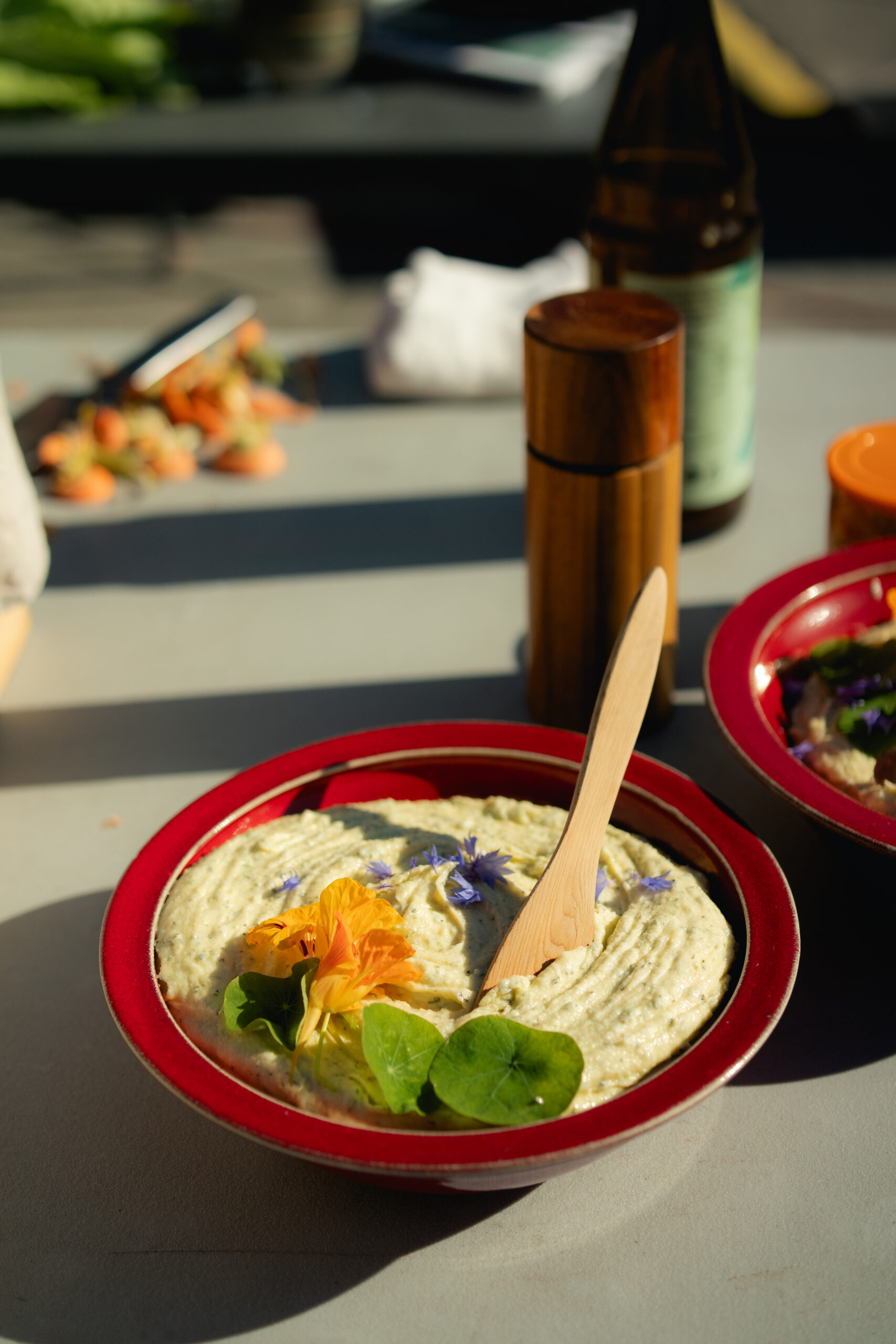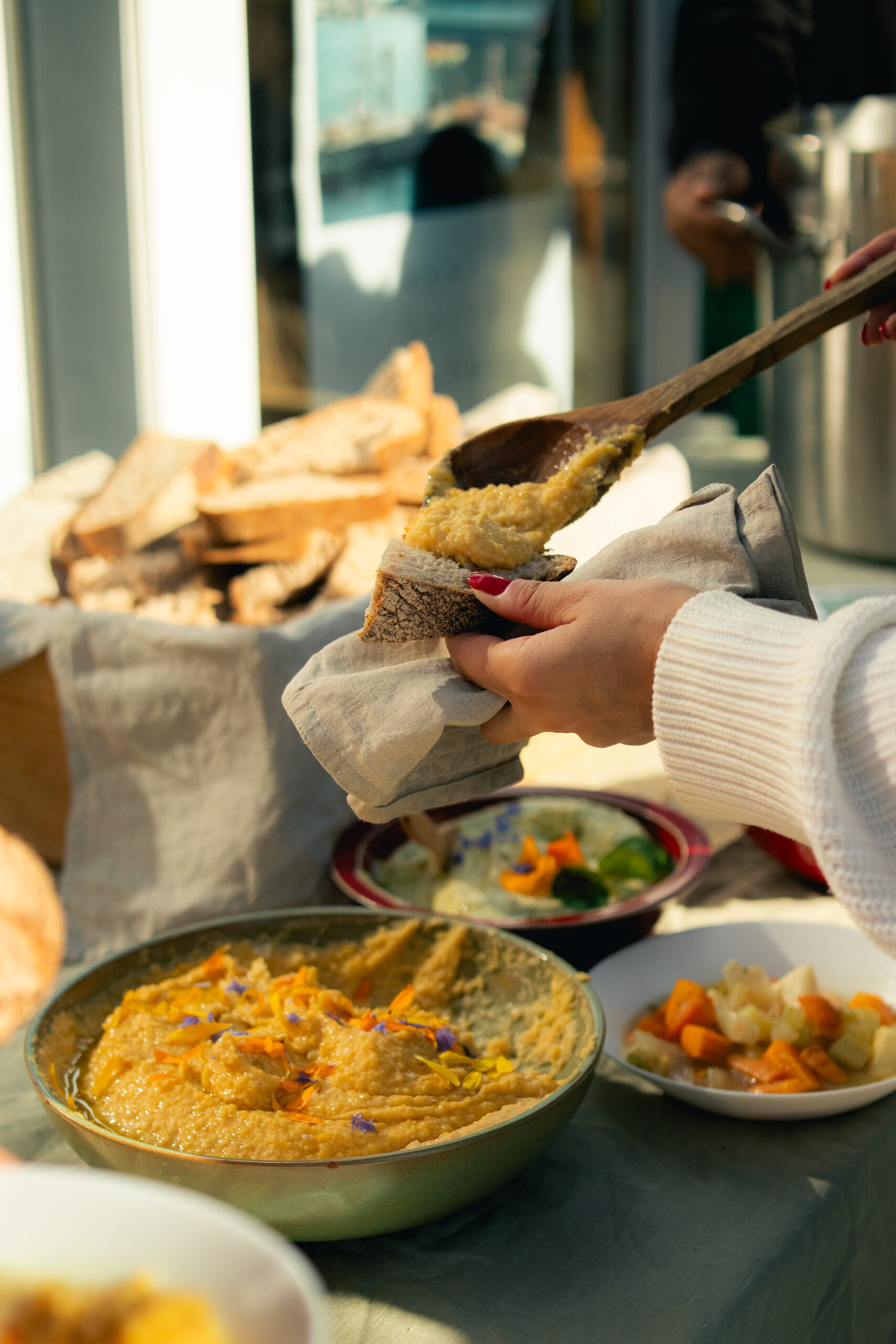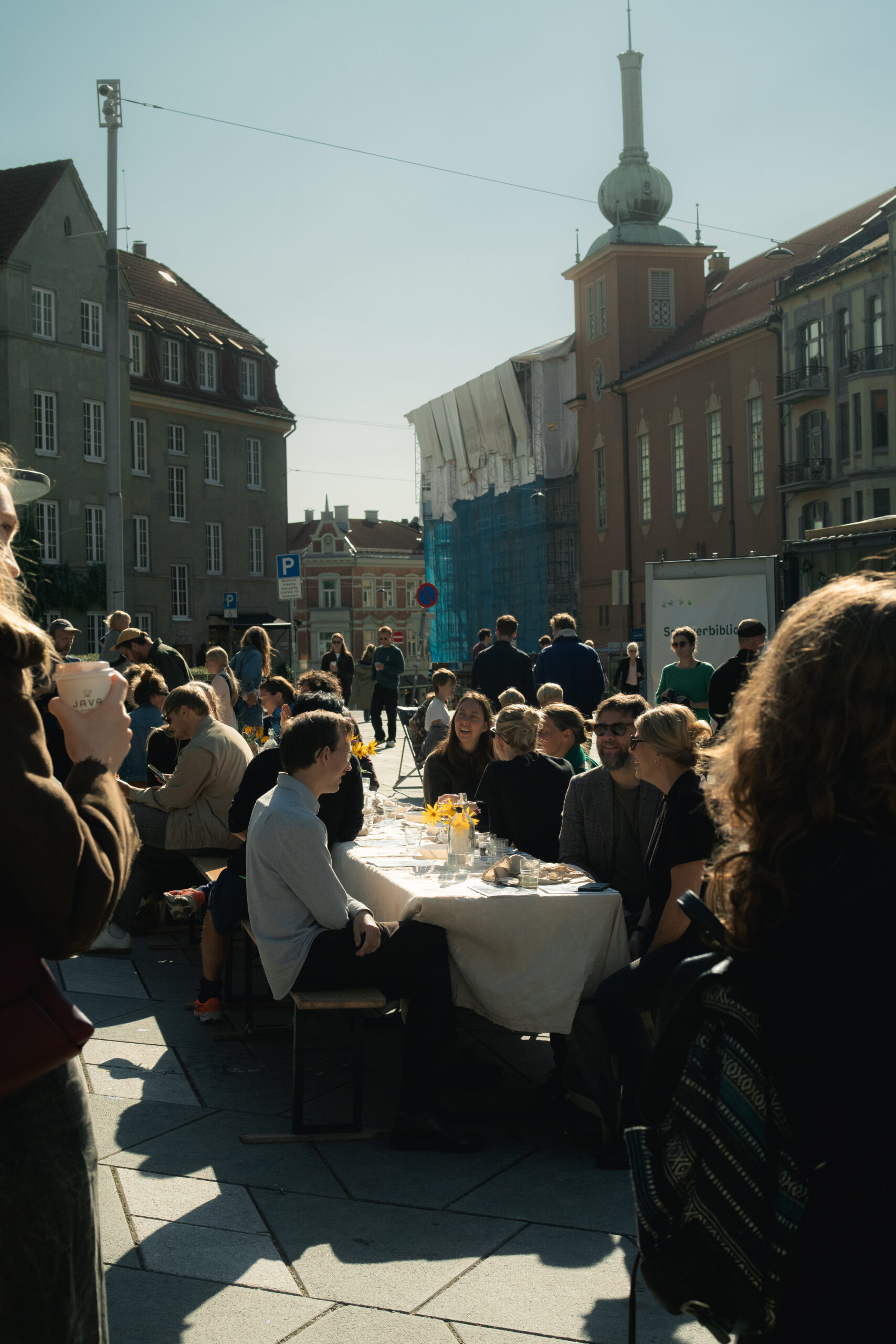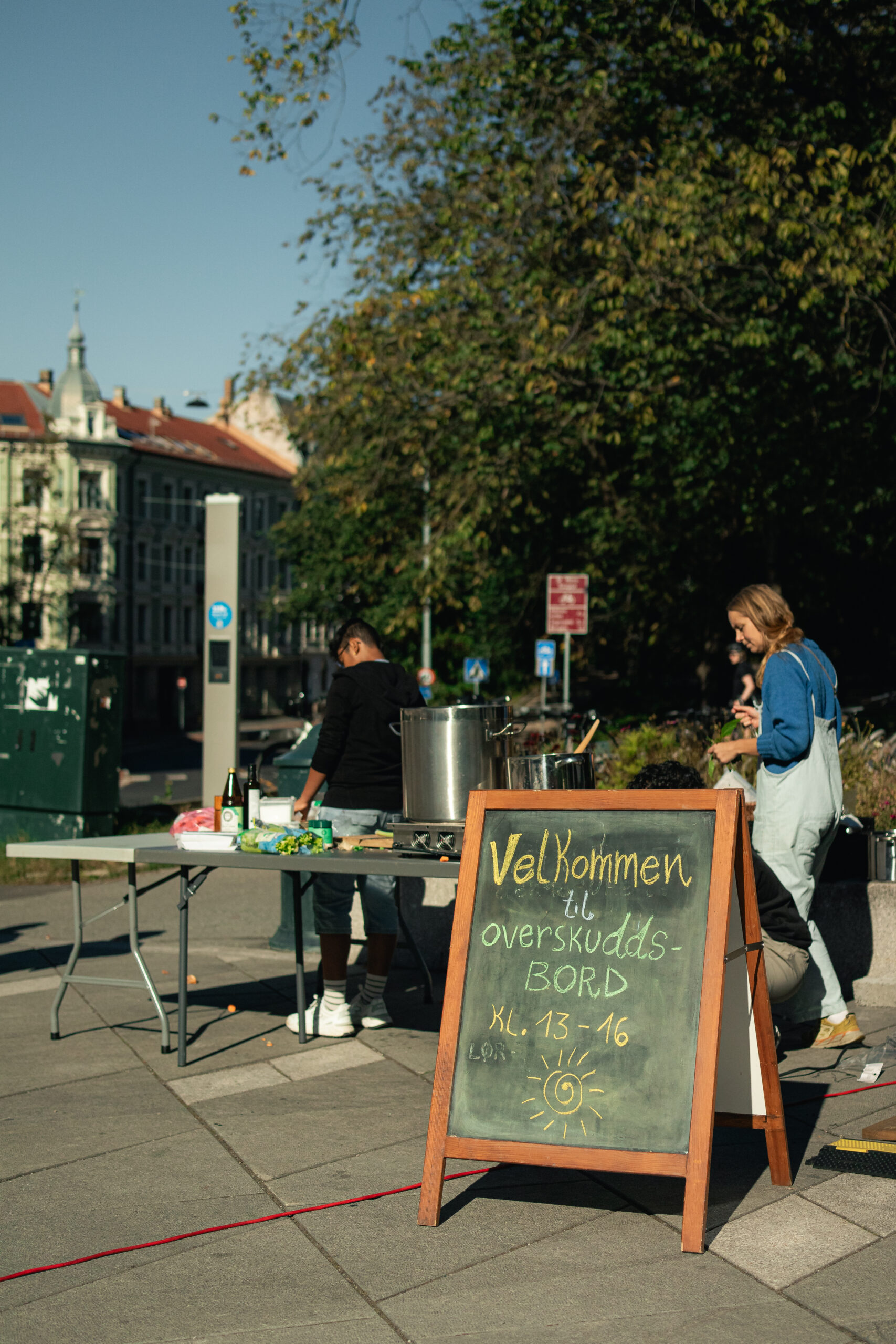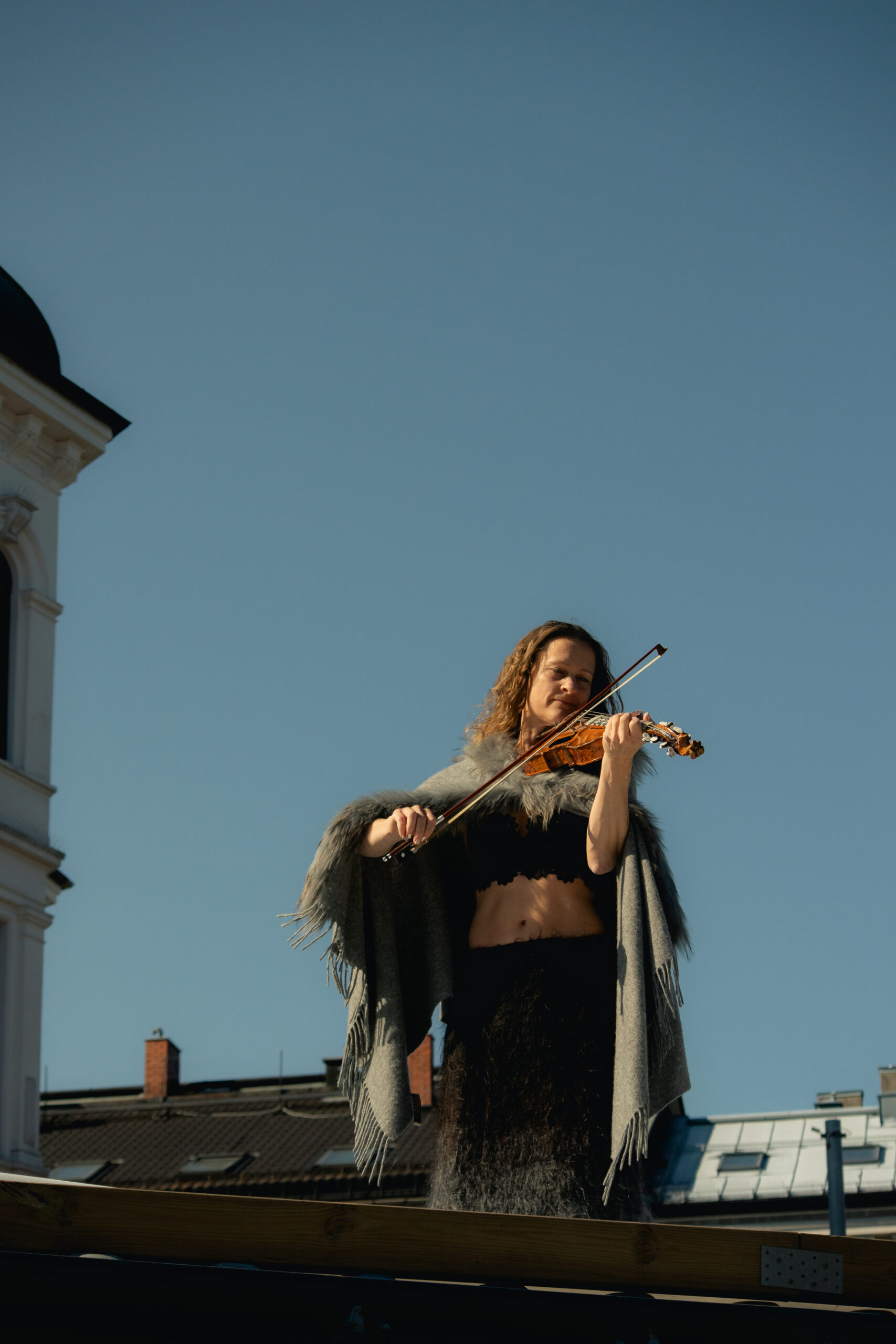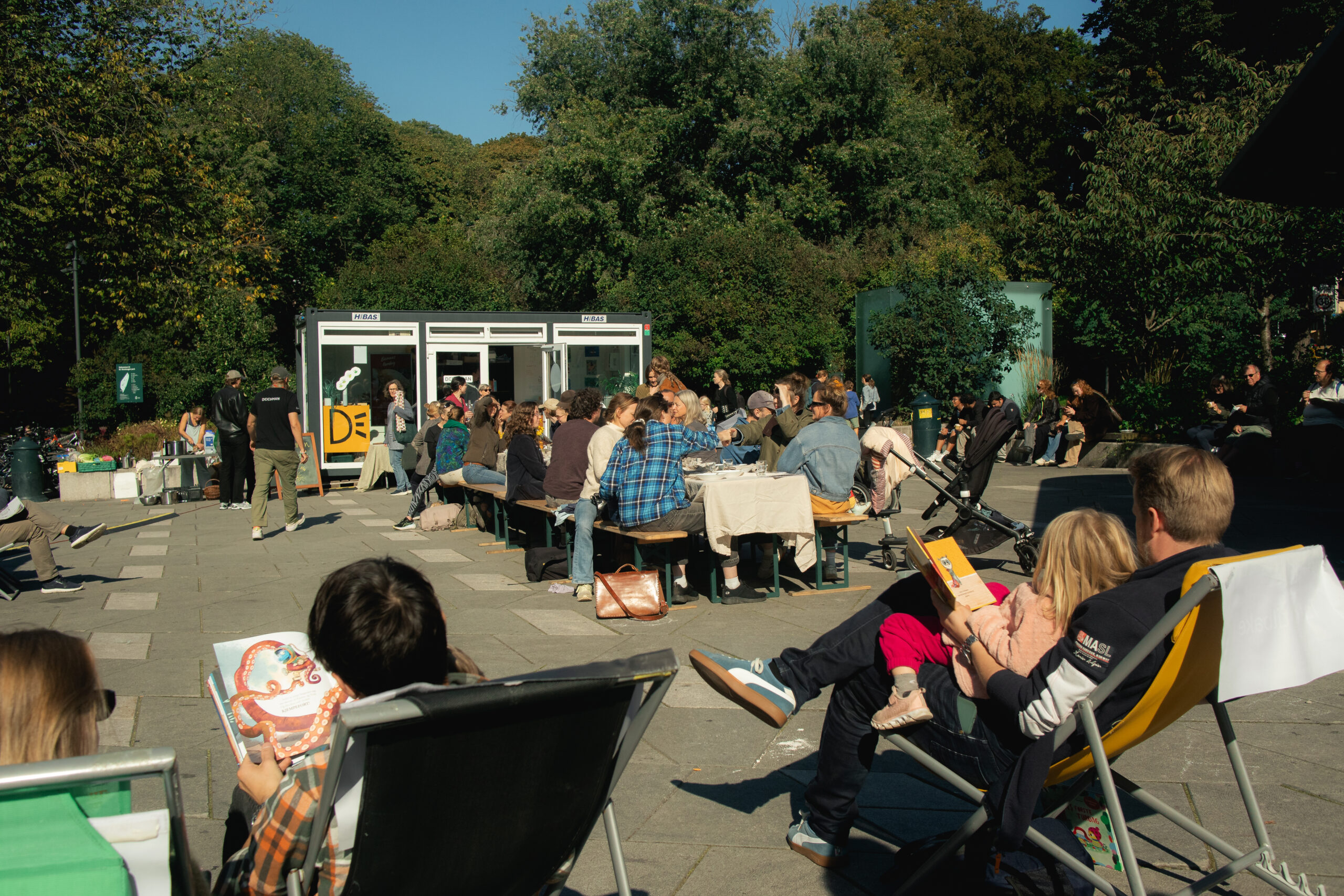Pastevent
Abundance table
— At St.Hanshaugen
In the last year, I have realized that the scarcest resource in my life as a mother of young children is time. So it has now also become an exploration of how we can organize gatherings for ourselves and our communities with ease and surplus energy. I also practice making meals that accommodate everyone—we all have different bodies and different reasons for choosing what we eat, whether it’s due to intolerances, animal welfare, religion, or other considerations. Creating meals where everyone can join in and feel included is also part of this practice for me.
This summer, I was invited by an old colleague and friend, Mathias Michelsen, to do this again as a celebration for the end of the Summer Library at St. Hanshaugen. The Summer Library at St. Hanshaugen is an outdoor area of approximately 60 square meters on Knut Knutsens plass, in the heart of St. Hanshaugen. It has now been running for four years, and the local community has embraced it with love. It seems to be appreciated by all kinds of people, and it’s the type of natural communal space in a public area that most city developers aim to create. But because both a natural “circus director” like Mathias and a perfect spot like this are rare, we don’t get to experience these spaces often.
The library is the first step towards becoming a full library, later to be housed in the old veterinary institute. It will offer library services and be a joy for everyone in the district, as well as being a practical library for almost everyone in Oslo. Its services include ordering, collecting, and delivering books. They offer a simple but exciting collection of books, perfect to take with you to the park, beach, or forest. They aim to be a cultural oasis and a practical stop on the way to or from people’s daily activities, bringing joy to the local community through books, activities, workshops, events, and much more.
“So the idea of gathering forces was to use the surplus food and enthusiasm from the DEMO Sankthanshaugen project to create one last meaningful experience that could be shared with our patrons before the year’s implementation was over,” said Mathias Michelsen. Gathering around a table created opportunities for relationship building between the borrowers, local actors, and also provided jobs for young people—important elements of the project. But the most important thing was to do this in a sustainable way that made good use of resources. For Mathias, as a project manager with a hectic daily life and many events, it was incredibly valuable to collaborate with us. Since we had shared experiences working together at Deichman, it was an easy process. We agreed on ambitions, concept, and execution, and for him, it was reassuring to have a creative and experienced partner who ensured everything was successful.
Text: Cecilie Dawes
Photoes: Sitronsaft
Film: Deichman owner
